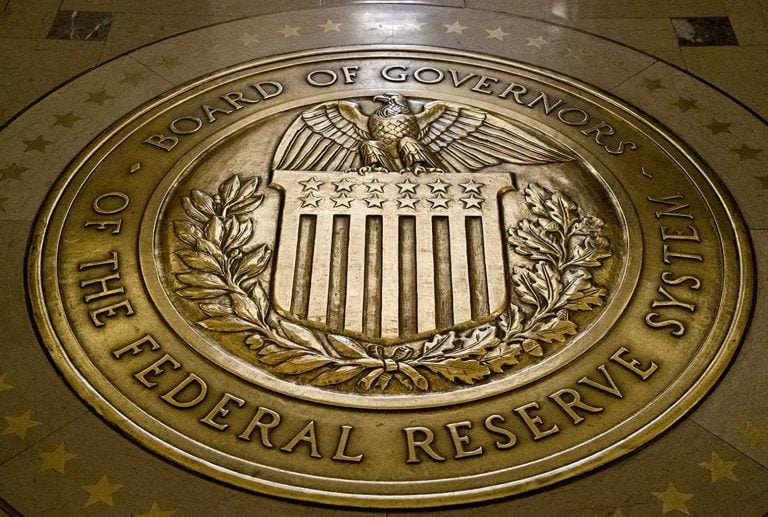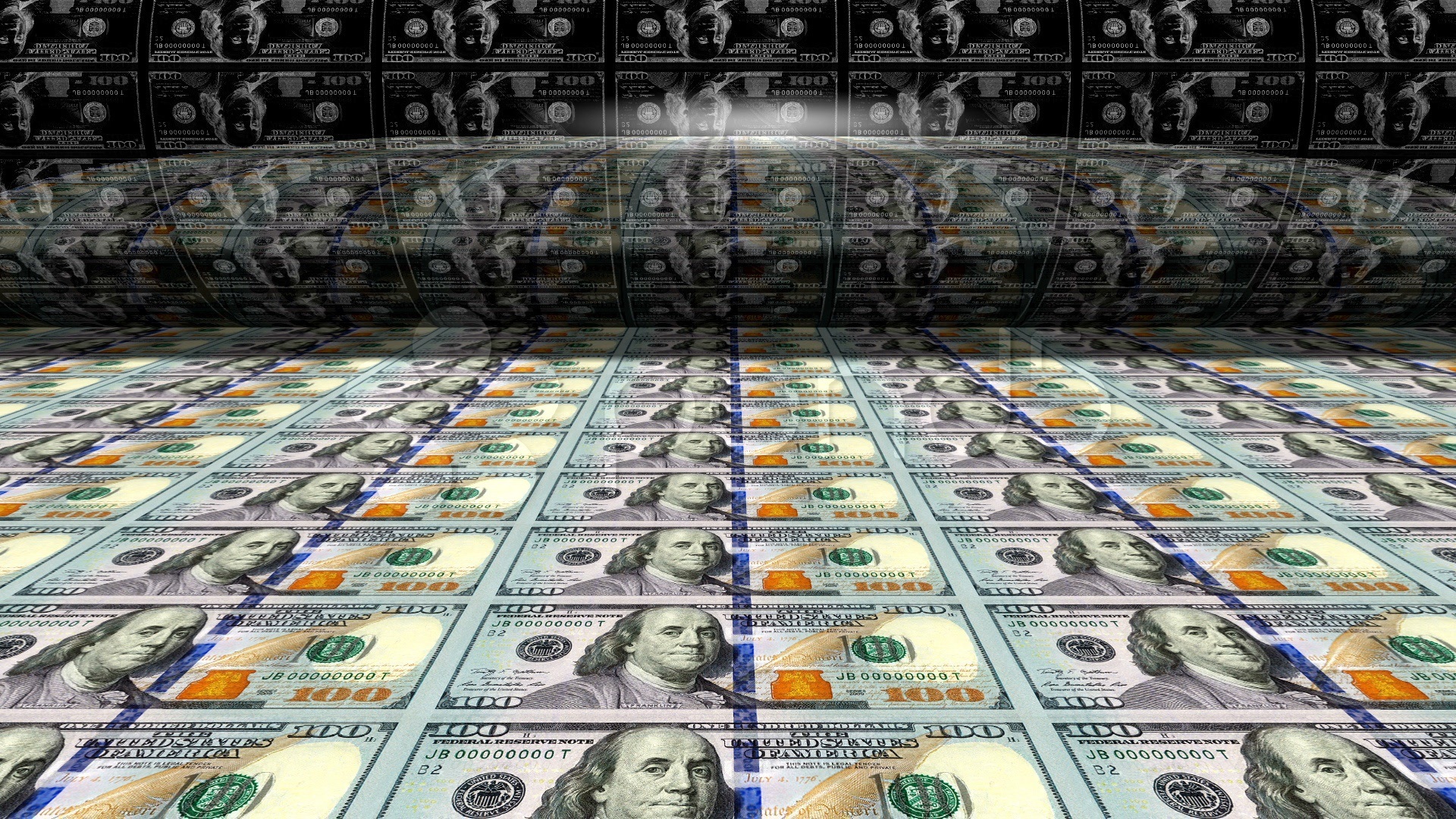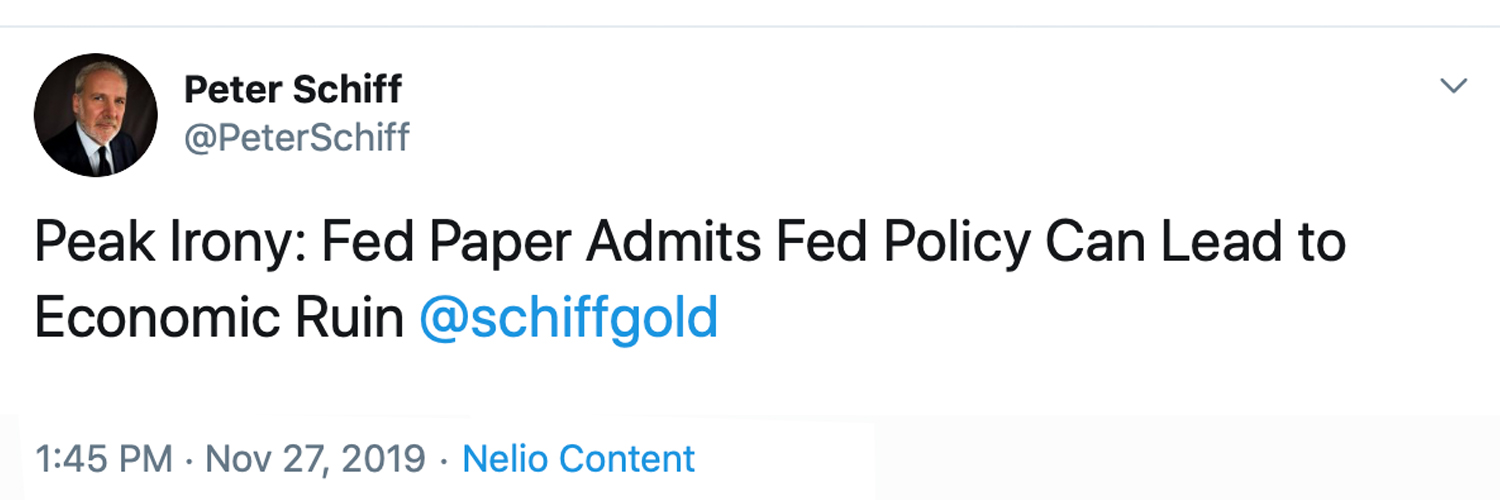Despite St. Louis Branch Warnings, New York Fed Pumps $108 Billion Into US Economy
Publikováno: 29.11.2019
 On Wednesday, November 27, the U.S. Federal Reserve pumped $108 billion into the American economy using overnight repo tactics and 15-day repos. The central bank explained the move will stimulate more liquidity into the faltering U.S. economy, but economists from the St. Louis Federal Reserve branch say too much money-printing could lead the country into […]
On Wednesday, November 27, the U.S. Federal Reserve pumped $108 billion into the American economy using overnight repo tactics and 15-day repos. The central bank explained the move will stimulate more liquidity into the faltering U.S. economy, but economists from the St. Louis Federal Reserve branch say too much money-printing could lead the country into […]
The post Despite St. Louis Branch Warnings, New York Fed Pumps $108 Billion Into US Economy appeared first on Bitcoin News.

On Wednesday, November 27, the U.S. Federal Reserve pumped $108 billion into the American economy using overnight repo tactics and 15-day repos. The central bank explained the move will stimulate more liquidity into the faltering U.S. economy, but economists from the St. Louis Federal Reserve branch say too much money-printing could lead the country into “economic ruin.”
Also read: US to Strictly Enforce Crypto Rules Similar to FATF Guidelines
New York Fed Injects Billions Into the Financial Sector
The Federal Reserve has been pumping money into the American economy for weeks on end and many economists believe the stimulus won’t help. The central bank has slashed interest rates multiple times during the last few months and injected more than $270 billion to the balance sheet since September. The Federal Reserve is now adamant that interest rates will remain unchanged for now, but federal debt has surpassed $22 trillion this year. To tackle this issue the central bank has been injecting billions into the economy using repurchase agreements (also known as repos) with primary dealers, which are authorized by the Federal Open Market Committee (FOMC). Essentially, the Federal Reserve purchases massive amounts of securities and Treasuries in order to adjust the supply of reserve balances. The New York Fed calls the practice “fine-tuning the supply of reserves in the system.”

On Wednesday, the FOMC authorized more stimulus intervention, which was done using two different repo schemes. Reports reveal that the NY Fed purchased “all of the securities it was offered” by injecting $87.95 billion in overnight repos and $21 billion in 15-day repos. Wednesday’s stimulus pumped a grand total of $108.95 billion into the American financial system and the NY Fed thinks operations like these will continue until mid-2020. Of course, after the massive money printing spree, free-market economists and crypto activists stressed that central bankers are doomed. The founder of Northmantrader.com, Sven Henrich explained that these days, central banks can’t even survive without the money injections.
“The global economy is on crutches,” Henrich remarked on Thursday. “This is why it requires constant central bank intervention and hence the talk of fiscal stimulus everywhere — The plain truth is that it can’t do without. Organically it already is in recession — Intervention/stimulus/debt keeps kicking the can.” The market analyst added:
10 years after the financial crisis we’re exactly back to where we started: Requiring intervention, low rates and QE. Except now the world has $250 trillion of debt. And the only solution is to do more of the same — Genius.
The "Call of the Day" comes courtesy of Pictet, which says:
The Fed’s three rate cuts in 2019 are not enough to change the dynamics and trigger a V-shaped rebound; policy makers will have to resume rate cuts with a 25 bps cut in June, followed by three cuts of similar magnitude.— Robert Burgess (@BobOnMarkets) November 27, 2019
St. Louis Fed Paper: ‘This Type of Policy Often Ends in Economic Ruin’
Even economists that work within the Fed’s infrastructure think that burgeoning U.S. debt and massive central bank printing could lead to “economic ruin.” Scott Wolla, of the St. Louis Fed, and Kaitlyn Frerking, from the University of Missouri, in their latest research paper state that “the U.S. government debt is currently on an unsustainable path.” “Trends that are unsustainable will not continue because the economy will adjust, sometimes in abrupt and jarring ways,” the paper by Wolla and Frerking notes.
“While governments never have to entirely pay off debt, there are debt levels that investors might perceive as unsustainable,” the St. Louis Fed paper highlights. “A solution some countries with high levels of unsustainable debt have tried is printing money. In this scenario, the government borrows money by issuing bonds and then orders the central bank to buy those bonds by creating (printing) money. History has taught us, however, that this type of policy leads to extremely high rates of inflation (hyperinflation) and often ends in economic ruin.”

Economist and gold bug Peter Schiff believes all the QE (quantitative easing) tactics are an “abject failure” and the central bank’s financial fires cannot be watered down. “Soon the markets are going to discover that QE is permanent and that there’s never going to be a real reduction in the balance sheet,” Schiff recently wrote. “The balance sheet is going to grow into perpetuity and I think we’re going to have a dollar crisis. I think we’re going to have a sovereign debt crisis. I think this is going to end very poorly for people who have been enjoying the paper gains in this stock market bubble.”

Despite the warning signs, left-wing leaders and Modern Money Theory (MMT) supporters like Alexandria Ocasio-Cortez (AOC), Elizabeth Warren, Andrew Yang, and Bernie Sanders are advocating the Fed print money to pay off government debt. According to believers in MMT, as long as the overall debt is paid off using government-issued tender and the inflation rate stays stable, ‘defaulting’ is near impossible. Politicians from both the left and the right seem to concur in unison that government deficit spending is fine. As of right now, central banks like the Federal Reserve also agree with the notion of deficit spending tactics and continue to orchestrate massive repos and monetary easing.
What do you think about the Fed’s latest easing tactics? Do you think people will continue to seek a safe-haven in cryptocurrencies and precious metals? Let us know what you think about this subject in the comments section below.
Image credits: Shutterstock, Twitter, Wiki Commons, Fair Use, Pixabay, and Yahoo Finance.
Are you looking for a secure way to buy Bitcoin online? Start by downloading your free Bitcoin wallet from us and then head over to our Purchase Bitcoin page where you can easily buy BTC and BCH.
The post Despite St. Louis Branch Warnings, New York Fed Pumps $108 Billion Into US Economy appeared first on Bitcoin News.